What happens next for Activision Blizzard's biggest games?
Our report card on the challenges facing WoW, Overwatch, Call of Duty and more as they enter the Microsoft era.
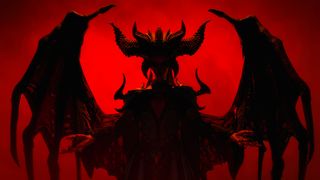
In March of 2021, Microsoft acquired ZeniMax for $7.5B—a price which, disorientingly, now seems modest. Almost a year on, and with only Deathloop released by Bethesda since, it's clear that the impact of corporate changes, however dramatic, take a long time to be felt by players. So if you're hoping for an overnight shift in direction from Call of Duty, World of Warcraft, or Overwatch, you're likely out of luck.
But behind the scenes, much will be in motion. The fact Microsoft has been able to buy Activision Blizzard at all speaks to the well-documented troubles the latter has been having. Against the backdrop of multiple lawsuits over harassment and discrimination at Blizzard, it's easy to forget that many of the major games have also been experiencing convulsive issues. World of Warcraft's crown has slipped post-Shadowlands, Hearthstone's big new mode looks like a substantial flop, and the Overwatch League increasingly seems like a white elephant.
To get a sense of the to-do list for the new owners, I asked our reporters to give us a pulse check on the Activision Blizzard games they specialize in, paying particular attention to problem areas and obvious opportunities that Microsoft will need to deal with.
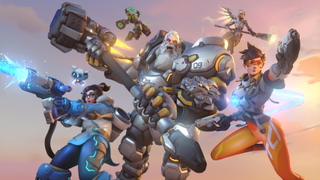
Overwatch
I didn’t think it would be possible for Overwatch to be in an even stranger position than it already was until Microsoft showed up to prove me wrong. Blizzard’s MOBA-y first person shooter has had a quiet last couple of years as the development team has focused primarily on the sequel. It wasn’t until very recently that the community management team held some meetings with popular content creators to discuss what 2022 means for the game—some speculate that big changes (possibly new heroes and maps, but I’m skeptical) are finally coming after two years without them.
With Microsoft at the head, I’m not sure much changes for the current game. It’s always been made clear that Overwatch, while not completely abandoned, isn’t going to receive any major updates outside of its usual events and skins. Overwatch 2 will probably see the bulk of the changes, if there are any. The game was announced for PC and the current (and last) generation of consoles, including the PlayStation 4, PlayStation 5, and Nintendo Switch. While Microsoft is fairly good about honoring those promises to release on competitor hardware when the games aren’t far off, I wouldn’t be surprised if Overwatch 2 becomes an Xbox and PC exclusive. I think it’ll depend a lot on how far out the game is, but PlayStation owners might have to think about picking up an Xbox or a PC if they want to play the next game.
I wouldn’t be surprised if Overwatch 2 becomes an Xbox and PC exclusive.
As far as meaningful changes to what’s included in Overwatch 2, I doubt much will happen. If Blizzard is to be believed, Overwatch 2 is pretty solidly planned out. It’s been in development for a while; it’s probably past the stage where you can change anything fundamental about the design. The most we might see is the game’s inclusion in Game Pass, which could alleviate what’s expected to be a $60 to $70 tag at launch. Halo Infinite’s multiplayer came out early and was free to play. Why couldn’t Overwatch 2 do the same?
When it comes to Overwatch League, it’s pretty unclear what might happen. The esports side of Overwatch has seen a lot of staff departures, layoffs, and shifts, and, at this point, I have no idea if the entire thing is considered successful. It's certainly expensive. I imagine there’s a lot of pressure on it to explode again this year when the teams play on a version of Overwatch 2, but it’s entirely possible the interest won't be there. In that climate Microsoft might reevaluate what OWL means for the game and potentially downsize it and put more support in third-party events. But first it needs to get the game out the door. —Tyler Colp, Associate Editor
PC Gamer Newsletter
Sign up to get the best content of the week, and great gaming deals, as picked by the editors.
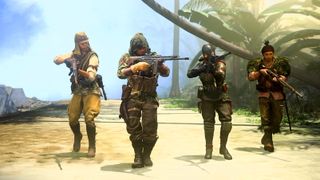
Call of Duty & Warzone 2
Microsoft is taking ownership of Call of Duty at a transitional time for the series. Sales on its yearly games are down for Vanguard (we scored it a 60%), but Call of Duty: Warzone, the free-to-play battle royale spin-off, remains massively successful. Warzone has increasingly become the focus for Activision over the last two years—it's the first game in the series to be supported for as long as it has. That said, relatively this is the most troubled time for Warzone since its release. The underwhelming new map launched with major performance issues on console that persist almost two months later.
Season 2 of Warzone Pacific has been delayed a few extra weeks to give Raven more time to address these issues. Meanwhile, employees have been on strike for weeks to protest the unceremonious layoffs of over a third of the studio's QA department. How Microsoft manages a company that upset its own staff and poisoned its reputation will be telling.
Activision has always been risk-averse with CoD, but Microsoft can theoretically swing for the fence if it'll bring in new Game Pass subscribers.
Warzone has become the single, continually updated Call of Duty that fans have wanted for years, so it makes even less sense that Activision is still making an annual $60 game every year. The lukewarm reception to Vanguard's may signal that this double-dipping won't work for much longer, and a new Microsoft regime could eventually upend the annualized model.
The current CoD system is a mile-long list of studios that take turns making these massive, flashy campaigns with samey multiplayer. What if Microsoft reallocated these resources to make smaller, more distinct spin-offs? Activision has always been risk-averse with CoD (hence the billion Black Ops sequels), but Microsoft can theoretically swing for the fence if it'll bring in new Game Pass subscribers. Not to mention the brand new games that are possible with the wealth of talent it's absorbing.
Before Raven was a Call of Duty studio, it made the one-of-a-kind Singularity and a surprisingly good Wolverine game. High Moon made Transformers games that kinda rocked, and did great work alongside Bungie on Destiny. After years in the CoD mines, I have to imagine these studios are eager to try something else.
— Morgan Park, Staff Writer
World of Warcraft
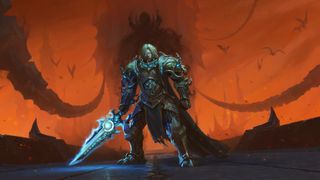
World of Warcraft isn't in the best place right now, and only part of that can be attributed to the Activision Blizzard lawsuit. Shadowlands, which launched in late 2020, has fallen way short of expectations. Sylvanas and Anduin's character arcs just feel like the tired rehashing of the Garrosh Hellscream storyline, though somewhat less believable. And while the overly-complex power systems are certainly at the heart of the expansion's problems, Shadowlands as a whole has felt disjointed and lacklustre.
A bad expansion was followed by the impact of the lawsuits, which has snowballed negativity.
It's way too early to tell how the Microsoft acquisition will affect World of Warcraft's future. Many of the more minor updates in the last six months have felt like desperate backpedaling on unpopular systems like Covenant switching or the recent reintroduction of Legion's Mage Tower—the latter being something that players have requested for years. While these changes have been welcomed, they come across as panicked damage control rather than thoughtful implementation. I hope that having Microsoft at the helm will take some of the pressure off the dev team and enable them to think meaningfully about WoW's long-term direction.
For now, the upcoming 9.2 update will bring the last Shadowlands raid, so we're likely to get a new expansion announcement in the next few months. And let's face it, for all its troubles, WoW remains one of the biggest games in the world. It's always had lulls, and it's always come back fighting. The difference on this occasion is that a bad expansion was followed by the impact of the lawsuits, which has snowballed negativity. The most substantial change I can imagine happening in the Microsoft era is that we'll somehow get a Game Pass subscription option to help pull in more players. I wouldn't hold your breath for an Xbox Series X version though.
—Sarah James, Guides Writer
Hearthstone
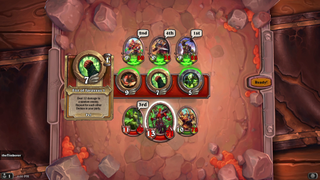
We've already published a comprehensive piece on the (increasingly sprawling) State of Hearthstone. I'm less charitable than its author, though, so I will say here that I think the launch of the Mercenaries mode has been a disaster unparalleled in Hearthstone's history. It's a brutal grind and way too expensive, and I say that as someone who's mostly been okay with the grind and expense of Hearthstone's other modes. Based on the 3rd party data doing the rounds, Mercs looks deader than Priest decks right now. It will certainly take a massive reinvention to salvage it.
The game's spaghetti code is serving up more and more weird bugs and unintended interactions
One mode whiffing in a game which has multiple popular ones might not seem like a big deal, but it also highlights the crisis facing Hearthstone. The explosive popularity of Battlegrounds has shown the game can be rejuvenated, but the lack of viable monetisation in that mode must continue to give Blizzard's accountants conniptions. Mercs was clearly designed to replicate that success, but this time make players pay for it. Neither has happened, as it turned out that bottling lightning wasn't quite so simple.
There's also the question of what's to be done with the game's increasingly creaky client. With the team spread across so many modes and working on multiple expansions at once, it's little surprise that the game's spaghetti code is serving up more and more weird bugs and unintended interactions.
Where there's cause for optimism lies with the team itself. Blizzard has made a point of hiring young Hearthstone pros on the design side, as well as a number of prominent community members in the marketing/PR department. Alongside veterans like Dean Ayala and Chadd Nervig, there's a ton of talent and creativity in Team 5, and if mobile is one of the key things that attracted Microsoft to the takeover, then perhaps Hearthstone will be made a bigger priority in the new era. Hell, maybe we'll even finally get a tournament mode!
—Tim Clark, Brand Director
Diablo 4
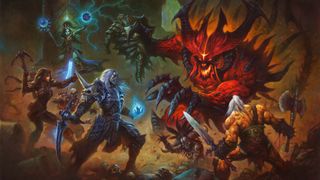
When I played an early version of Diablo 4 at BlizzCon 2019, I was told not to expect a release anytime soon, and that was before 2021's Activision Blizzard shake up, which led to the departure of Diablo 4 game director Luis Barriga.
We know for sure that Diablo 4 won't be out this year, because it was delayed last year despite not having a public release date in the first place. I expect it to be out in 2023, but it could be held until 2024, even. Microsoft apparently didn't pressure Double Fine to get Psychonauts 2 out the door after it acquired that studio, so maybe the Diablo team will get the same treatment. Spending a long time making a Diablo game certainly wouldn't break precedent. 12 years passed between Diablo 2 and Diablo 3. If Diablo 4 released in 2024, that would put 12 years between it and Diablo 3. Maybe they'll go for consistency?
The new Diablo 4 game director is Joe Shely, who's been with Blizzard since 2005, and was already a Diablo 4 design lead. Shely oversaw development of that BlizzCon demo, and it was fun, but far too early to base any definitive judgments on. It at least confirmed for me that Diablo 4 is, as promised, more gruesome and macabre than Diablo 3, which controversially cheered up the satanic underworlds of the first two games. I thought Diablo 3 looked fine, personally, but I do appreciate the increased attention to dusty skull piles I saw in Diablo 4.
Diablo 4's development looks healthy from the outside.
Much more significant than the "darker" mood—and something I didn't get a hands-on impression of—is the way Blizzard is constructing Diablo 4's solo and co-op story campaign within a larger, shared world, where you'll see other players wandering around. Shely explained how Diablo 4's shared world will work back in 2019, and former director Barriga explained how open world PvP will be handled last year. The Diablo 4 team posts quarterly updates about development, most recently delving deep into the loot and visual effects systems.
Diablo 4's development looks healthy from the outside. All the things you'd expect the designers and artists to be thinking through are being thought through, and Blizzard recently demonstrated its appreciation for the classic Diablo experience with a faithful remake of Diablo 2. The big questions for Diablo 4 haven't changed with the Microsoft acquisition: What will it bring us that Path of Exile and other modern APRGs haven't? And even if Blizzard gets everything right, is there still a desire for a satanic click-'em-up? I think there is, because at the end of that BlizzCon demo, I looked around to see if anyone was waiting for a turn, hoping I could start it over immediately.
—Tyler Wilde, Executive Editor
Tyler has covered games, games culture, and hardware for over a decade before joining PC Gamer as Associate Editor. He's done in-depth reporting on communities and games as well as criticism for sites like Polygon, Wired, and Waypoint. He's interested in the weird and the fascinating when it comes to games, spending time probing for stories and talking to the people involved. Tyler loves sinking into games like Final Fantasy 14, Overwatch, and Dark Souls to see what makes them tick and pluck out the parts worth talking about. His goal is to talk about games the way they are: broken, beautiful, and bizarre.
Most Popular

